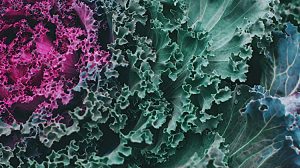 You remember each new encounter, trying unsuccessfully to hold back the salivating. How your mouth shaped around every new one in an attempt to make itself one with it, tongue exploring crevices and ridges, curves and surfaces. The tints and tones, surprising tastes; how fundamentally they are all the same, yet each so unique. Suck, lick, nibble, bite, swallow. It’s hard to know whether that Pavlovian response starts with the sight of it, the smell, or only at that perfect moment of contact: the newness and familiarity, the strange comfort and excitement that you think can never be replicated but does so easily, again and again and again. Repetitions that satisfy instincts yet unknown to the conscious but are dormant, waiting.
You remember each new encounter, trying unsuccessfully to hold back the salivating. How your mouth shaped around every new one in an attempt to make itself one with it, tongue exploring crevices and ridges, curves and surfaces. The tints and tones, surprising tastes; how fundamentally they are all the same, yet each so unique. Suck, lick, nibble, bite, swallow. It’s hard to know whether that Pavlovian response starts with the sight of it, the smell, or only at that perfect moment of contact: the newness and familiarity, the strange comfort and excitement that you think can never be replicated but does so easily, again and again and again. Repetitions that satisfy instincts yet unknown to the conscious but are dormant, waiting.
The pleasure of repetition comes with its occasional shocks: texture changes, a burst, a crackle, melting warmth. Something becomes nothing but not quite, because that nothing yields a memory more perfect than what you started with—held on the tongue, for the mouth receives as much information as the brain. I am sucking right now and it fills me, although a logical part knows it can’t fill every space as if it could expand to a perfect, complete fit—but what does it matter? I can taste it in every receptor, and whether I close or open my eyes it is there, and I don’t know if it is growing harder or softer, smaller or larger. It simply exists in a kind of pleasurable symbiosis, giving as it receives from me: as I receive that rush, I give what my body produces. This kind of desire is destruction, albeit in its most innocent form.
What end do we seek in such experiences? None at all, for we do not yet realise there will be one—that there must, necessarily. The wish to stop time, to be forever in that moment where there is nothing but sensory knowledge which is enough to satisfy, to answer all questions; the distillation of an act as key to future identity. From saccharine to carnal is a sticky education in more ways than one, but close in memory. Sticks to shafts, the pliability of sugar and starch like skin, and finally, the end: when the form finally yields completely, revealing the afterglow of the senses. I can remember them like lovers, just as I remember lusts like sweetmeats, a word that expresses both desire and devouring, more appropriate than candy.
10-cent boxes of sour or spiced balls tasting of lemon, grape, or cinnamon. Rocket-shaped Astro Pops in saffron yellow, fir green, and stained-glass red. ‘Old-fashioned’ striped sticks flavoured with horehound, tutti-frutti, blueberry, root beer, and clove, that I would suck and lick for hours, torn between wanting to feel them crumble between my teeth and remain firm and unbroken. Mint and vanilla salt water taffy, fresh and warm from the fairground machine. Pastel pink, frost white, and sea green pillow-shaped buttermints, melting on the tongue. Ribbon candies at Christmas, satin-glossed in the typical holiday colours of holly green and poinsettia red, folded over and over in frozen curves, and as I sucked I imagined how they were made: warm ropes pulled and stretched into infinity. Japanese kuro-ame (black sugar) hard sweets with their addictive taste of burned caramel, konpeito, pastel-coloured and mace-head shaped, tasting of nothing but simple sweetness, and Kasugai fruit gums in white peach, sharp muscat grape, melon, mango, lychee, kiwi. The softness of them were like skin, a disturbing texture even to my young lips that left me wanting: what, I did not know—just a yearning that would later find its home in women’s lips and folds, just as soft in their musky ripeness. To eat one now is Proustian, electric: a signal straight from my mouth to my cunt, and I can remember my first time, forgetting where candy ends and flesh begins.
One of my great joys as a child was to be taken to a sweet shop in another city. A veritable Aladdin’s cave, but instead of the trees laden with gems, walls were lined with shelves holding large glass jars with pointed lids or bushel baskets, all filled with wrapped and unwrapped confectionery of every and any kind. Behind glass-fronted cases were pans of fudge in every hue from cream and beige to black-brown. Rock crystal candy as blue as frosted sea glass covered wooden sticks—although sometimes used by grownups as a sweetener for tea or coffee, I preferred to place my tongue on each point, feeling its spikiness dissolve slowly, but would lose interest once their raw aquamarine beauty disappeared. Inside the baskets were candies from all over the world, wrapped in crisp, clear or coloured cellophane, others in white waxed paper. Ground sugar from broken edges dusted chunks of aniseed rock, curiously medicinal like my first tastes of clove and horehound, ‘adult’ flavours I insisted on liking because they reminded me of the combined smell of the old spice jars that sat in the kitchen cupboard. Brightly striped silky fruit ovals filled with chocolate. Chewy Yogolo yogurt cubes flavoured with peach or cherry. Butterscotch and hard toffees in gold and silver foil.
Scattered brass stands held enormous spiral rainbow all-day suckers, some flat and circular, others like unicorn’s horns; impossible phallic dreams. White and gold-edged tins of fruit and herbal sweets had their names in French as well as English, where I learned other languages: fraise, cassis, poire, menthe. Elaborate cigarette-style boxes of gumdrops dusted in fine granulated sugar with botanical-style drawings of the fruit they were flavoured with. A small vertical rack on the counter held Pierrot Gourmand lollipops—I’d forgotten about these until recently, when I read a book by Camilla Grudova, where an empty display is described with a kind of foreboding. I was flooded with the memory of begging my parents for one, and when my wish was granted, spending long minutes looking at the acid yellow, lime green, tangerine, deep blue, and muted raspberry colours. I chose blue, although I no longer remember the taste—it was simply blue, the gateway that led me to others: Klein, Majorelle. I coveted the perfect round shape and tight wrapping, the way the light shone on it, the elegance of a Pierrot head as a logo, a French sweet that announced itself as superior in every superficial way. The ones I was always offered—wrapped in cheap thin plastic or thick waxed paper—from a desk drawer or plastic bucket at the doctor’s or butcher’s seemed gauche and provincial, and although I had no words to describe those feelings at the time, I nevertheless felt my dissatisfaction with all the fury of a child who begins to realise that there is an elusive something more out there.
It occurs to me only now that I was just a small Madame Bovary, dreaming of an adventurous—arousing—life through sugar and glucose syrup because sex had not yet found me, although I was coming to its idea around the same time and in similar ways. Where Emma turned tissue-covered pages of illicit romances in her convent school, I sat in a living room in a small Midwestern city fingering wrappers from countries I only read about in books, with each suck or bite fantasising about another me: grown, worldly, hungry. But that kind of dream-hunger did not result in overeating of sweets, rather a gorging on the idea of variety at your fingertips, desires fulfilled as soon as they are imagined because of the freedom to imagine them. In that way, my hunger now is to satisfy my desires first as a concept and in doing so also know that to then physically fulfil myself will be to become completely inundated by the senses, just as sucking a single sour plum drop did so long ago. Poor Emma, who did not realise the slightest restraint or constraint can sometimes yield the most overwhelming pleasure, that to be content one must sometimes create a world within, instead of seeking it in desperation without.
There was nothing I could do but wait to grow into the adult world so I took it in accompanied by sweetness, wondering if such things were a comfort or a way of fantasising the real to them as well. A trip to a fancy food hall in a cosmopolitan city, choosing the most elegant treat I could see: a long box of after-dinner or ‘reception’ sticks—thin lime, lemon, or orange satin wands half-covered in dark chocolate. I would walk the aisles and around displays, in my head an illicit fantasy of stealing as much as I could hold: not so much a wish to transgress as it was to indulge in what the world held in the only way I could imagine it, just as Thomas Mann’s young Felix Krull loads his pocket with chocolates in the unattended shop, the secret savour of them later a glimpse into the possible.
As I grew older liqueur chocolates or fruits seemed to me the ultimate grown-up indulgence with their slow burn. Emma attends a ball where she sees herself eating a maraschino ice in a silver shell: surrounded, desired like a country Venus—the dream having become self-aware of its actual existence. I think of this now when I buy a box of griottes at Christmas—a single plump Morello cherry soaked in brandy, covered in a crisp sugar coating and then one of chocolate. I have eaten these living an imaginary happiness and a real one, but they both feel like dreams, the breaking through the sweet crust then a fire-burst of alcohol trickling down my throat recalling what it is to live as the desired and undesired. Attending a wake and being offered a hard candy from a dish, wrapped in gold cellophane with bees printed on it; to this day the taste of honey brings back a bittersweet heavy feeling, the memory of feet dragged silently on a carpet soaking up grief, the air thick with quiet recollections saved and brought out as if the dead were good china.
Does each bite and suck, every unfolding of a wrapper represent a memory of the past or a fantasy of the present? Are such pleasures the foreword to a life yet undiscovered, the outline of identity? I remember the scent of lilac bushes in full July bloom and taste of a flat transparent stick of watermelon candy, then new ones as indolic and sweet as flowers and artificial fruit: first fumblings, hidden in that bush—hard and soft and lush, we mimic our objects and surroundings. I sucked upon that stick until my childish desires dared to explore beyond my fantasies for more, turned upon my playmate and wished for—found—an untasted nectar. New unwrappings, new memories, new awareness of the senses. What is it we are we made of? First sugar then desire, pliable and sticky; what melts on the tongue remains in memory—to be recalled and re-formed in later years, the flavours of time long dissolved.





Rochelle Jewel Shapiro says
I tasted it all. Thanks for the non-caloric treat.